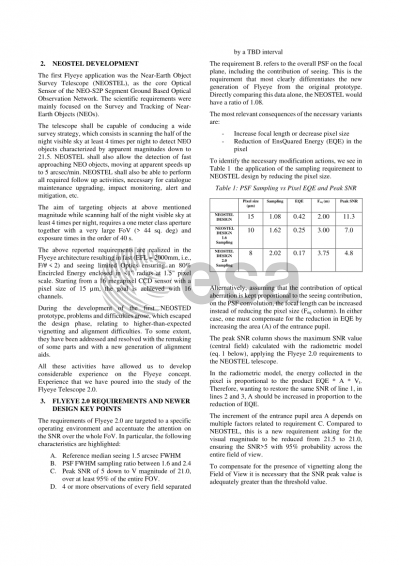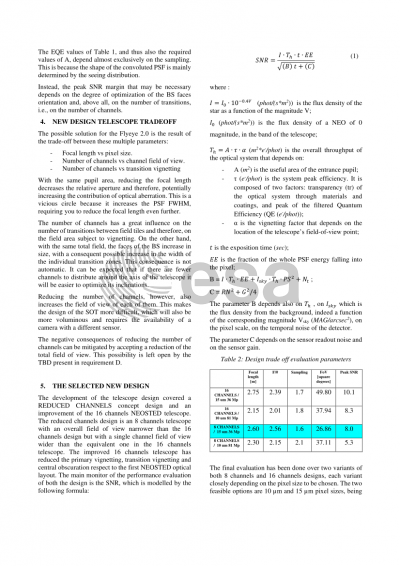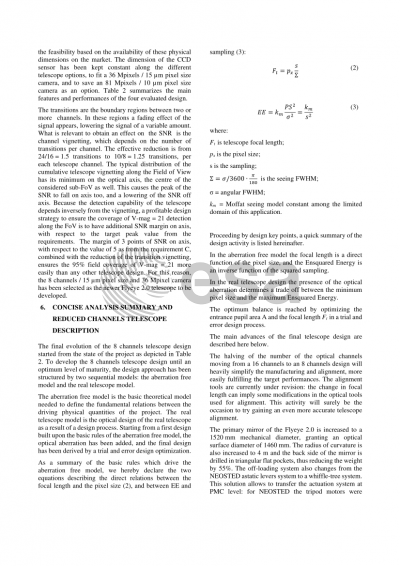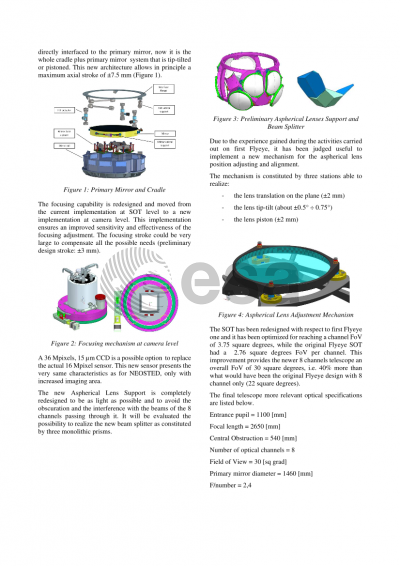Document details

Abstract
ESA’s Flyeye Telescope prototype, developed and under test in the frame of the NEOSTED (NEO Survey Telescope Deployment) ESA program, has revealed some limitations leading to degraded performance with respect to a key figure-of-merit, namely the achievable limiting magnitude over the Flyeye telescope’s complete wide field of view (FoV). The opportunity has thereby arisen to revise some of the original performance requirements.
Therefore, in May 2022 OHB Italia was entrusted by ESA to carry out a design study to improve the Flyeye telescope’s performance based from the existing Flyeye concept.
The study is mainly focused on improving the system’s radiometric throughput and optical quality in terms of Pixel Scale and Point-Spread Function (PSF) sampling, in order to meet the final user requirements. That means developing an upgraded Flyeye telescope capable of performing a wide survey and detecting asteroids down to V magnitude of 21.0 with a minimum peak SNR of 5.0 over at least the 95% of the entire FoV.
This paper describes the approach taken, starting from a preliminary trade-off between different new configurations leading the selection of a configuration called “reduced channels”. Briefly, this new Flyeye implementation, called Flyeye 2.0, is driven by three main aspects. Firstly, the transition vignetting effect has been reduced thanks to the reduction of the number of optical channels. In addition, the primary mirror has been enlarged to significantly reduce vignetting, in particular in the marginal optical channels. Finally, the new design will have a greater focal length to achieve the required FWHM sampling requirement, considering the expected typical seeing conditions, the instrument PSF, and the camera pixel size.
Within the frame of this design improvement, additional modifications and upgrades are considered, such as the development of a new off-loading system for the primary mirror (suitable also for locations with higher seismic risk), the reduction of the optical central obstruction, some minor modifications to the equatorial mount, and modification of the Secondary structure to accommodate the reduced number and modified geometrical arrangement of optical channels.
A preliminary performance analysis, based on the SNR model used for the performance assessment of the Flyeye prototype , is performed in order to confirm the quality of the improvement of the new optical design. The ESO site in La Silla, Chile, is assumed as a reference site for the deployment of the future Flyeye 2.0 telescope and subsequently for defining the environmental assumed in the performance simulation conditions (i.e. sky background magnitude and atmospheric seeing).
Preview








